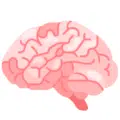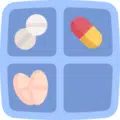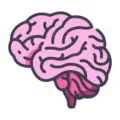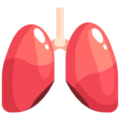Case Author
Kellie Ball, PharmD
Johnathon Proctor, PharmD
Anna K. Love, PharmD, BCACP
Expert Guests
Morgan Godfrey, PharmD, BCPS
Richard Silvia, PharmD, BCPP
 Kellie Ball PGY2 Am Care Resident University of Tennessee Medical Center Knoxville, TN |  Johnathon Proctor PGY2 Am Care Resident University of Tennessee Medical Center Knoxville, TN |  Morgan Godfrey Clinical Pharmacy Specialist University of Tennessee Medical Center Knoxville, TN |  Richard Silvia Psychiatric Pharmacy Specialist Massachusetts College of Pharmacy and Health Sciences, Boston, MA |
The Case!
Setting:
The patient presents to care at his primary care physician’s office in an internal medicine clinic. The clinic is in a rural part of the state, with most patients served on Medicare or Medicaid.
Patient Demographics (Initials, age, sex/gender, and race, only if relevant)
Appointment Date | Time | Provider: TODAY | 2:15 pm
M.O. is a 78-year-old male.
✦Unless otherwise noted, the patient’s sex assigned at birth and current gender identity are congruent.
Reason for Visit:
The patient is here today for hypotension and diabetes follow-up. The primary care physician has consulted the clinical pharmacist regarding hypotension.
History of Present Illness and Presenting Symptoms
Chief Complaint: “I feel dizzy when I stand up and feel like my heart is racing. I have never passed out, but it feels like I might, and I usually have to sit back down.”
The patient has been experiencing orthostatic hypotension for several months. He is very symptomatic and finds it difficult to rise from a seated or supine position.
In addition to type 2 diabetes and dyslipidemia, the patient has a history of schizophrenia. To address his dizziness, his risperidone dose was decreased from 3mg BID to 2mg BID. And while his blood pressure improved, he began to experience auditory hallucinations.
He does not have a blood pressure cuff at home. The patient checks his blood glucose “when he remembers.” He states that his fasting blood glucose readings are 120-140.
He is actively followed by his primary care physician and psychiatrist.
Social History including Health Insurance Coverage
The patient is disabled secondary to schizophrenia. His only income is through disability benefits. He is on state Medicaid. He lives with his siblings. One of his sisters acts as his primary caregiver and accompanies him to appointments, and manages his medications.
Significant Past Medical History
T2DM with hyperglycemia
Hypertension but currently has Low blood pressure
Hyponatremia
Mixed hyperlipidemia
Undifferentiated schizophrenia
Weakness
Weight loss
Current Medications
Insulin degludec – inject 10 units daily
Metformin 500mg – take 1 tab PO TID
Rosuvastatin 20mg – take 1 tab daily
Latanoprost 0.005% – instill 1 drop, both eyes daily
Risperidone 2mg – take 1 tab BID
Multivitamin – take 1 tab daily
Hydroxyzine 10mg –take ½ tab PO as needed
Physical Exam Findings / Vital Signs (TODAY)
| Weight | 72.3 kg (159 lbs) |
| Height | 181.6 cm (71.5”) |
| BMI | 21.6 |
| Blood Pressure | 104/74 mmHg |
| Temperature | 98.7 ˚F |
| Pulse Rate | 103 bpm |
| Oxygen (O2) Saturation | 99% |
Previous Visit (2 weeks ago)
HR 109
BP 96/60 mmHg
Pertinent Laboratory Findings
Basic Metabolic Panel
| Component | Reference Range & Units | Today |
| Glucose | 67 – 99 mg/dL | 134 |
| BUN | 6 – 24 mg/dL | 6 |
| Creatinine | 0.44 – 1.03 mg/dL | 0.64 |
| Sodium | 135 – 145 mEq/L | 130 |
| Potassium | 3.6 – 5.1 mEq/L | 4.9 |
| Chloride | 98 – 110 mEq/L | 95 |
| CO2 | 22 – 32 mEq/L | 28 |
| Calcium | 8.5 – 10.5 mg/dL | 9.5 |
| eGFR | Abnormal <60 ml/min/1.73M | >90 |
| Albumin | 3.5-5.0 g/dL | 4.7 |
| Total Protein | 6.0-8.0 g/dL | 6.9 |
| Total Bilirubin | 0.2-1.3 mg/dL | 0.6 |
| Alk Phos | 20-90 mU/mL | 75 |
| AST | 10-59 U/L | 12 |
| ALT | 10-40 U/L | 14 |
| Component | Reference Range & Units | Today |
| Total Cholesterol | 140-250 mg/dL | 133 |
| LDL | < 130 mg/dL | 73 |
| HDL | > 35 mg/dL | 44 |
| TG | 40-150 mg/dL | 82 |
| VLDL | 2-30 mg/dL | 16 |
| Component | Reference Range & Units | Today |
| Hemoglobin, A1c | 4.3 – 5.9% | 7.8 |
Urinalysis
| Component | Today |
| Color, Ur | Yellow |
| Appearance, Ur | Slightly cloudy |
| Glucose, Ur | Negative |
| Ketones, Ur | Negative |
| Blood, Ur | Negative |
| pH, Ur | 6.7 |
| Protein, Ur | < 10 mg/dL |
| Nitrite Level, Ur | Positive |
| Leukocytes, Ur | Positive |
| Bacteria, Ur | Moderate |
Microalbuminuria = 4.1
Albumin:Creatinine Ratio = 6
A urinalysis was completed to assess for albuminuria, but was also positive for a moderate amount of bacteria. This reflexed to a culture and resulted in 100,000 CFU’s pan-susceptible E.Coli.
FINAL NOTE: This program will be available for recertification credit through the American Pharmacists Association (APhA) Ambulatory Care Review and Recertification Program. To learn more, visit APhA BCACP Recertification – Evidence-Based Practice Series.
References and Resources
- Figueroa JJ, Basford JR, Low PA. Preventing and treating orthostatic hypotension: As easy as A, B, C. Cleve Clin J Med. 2010; 77(5): 298-306.
- Nkemjika S, Singh S, Wayne K, Oforeh K, Saha A. Risperidone induced hypotension: A case report and literature review. J Natl Med Assoc. 2022;114(6): 621-623.
- American Geriatrics Society Beers Criteria® Update Expert Panel. American Geriatrics Society 2019 Updated AGS Beers Criteria® for Potentially Inappropriate Medication Use in Older Adults. J Am Geriatr Soc. 2019; 67(4): 674-694.
- Bai YM, Ting Chen T, Chen JY, Chang WH, Wu B, Hung CH, Kuo Lin W. Equivalent switching dose from oral risperidone to risperidone long-acting injection: a 48-week randomized, prospective, single-blind pharmacokinetic study. J Clin Psychiatry. 2007; 68(8): 1218-25.
- American Diabetes Association Professional Practice Committee. 6. Glycemic Targets: Standards of Medical Care in Diabetes-2022. Diabetes Care. 2022; 45(Suppl 1): S83-S96.






 iForumRx.org is a web-based community of practice designed to inform ambulatory care pharmacy specialists, pharmacy residents, and student pharmacists about high-quality, practice-changing evidence.
iForumRx.org is a web-based community of practice designed to inform ambulatory care pharmacy specialists, pharmacy residents, and student pharmacists about high-quality, practice-changing evidence.
Thanks for putting together this complex case. My pharmacy students and I really enjoyed discussing all the clinical pearls you shared. We are looking forward to the next complex case.